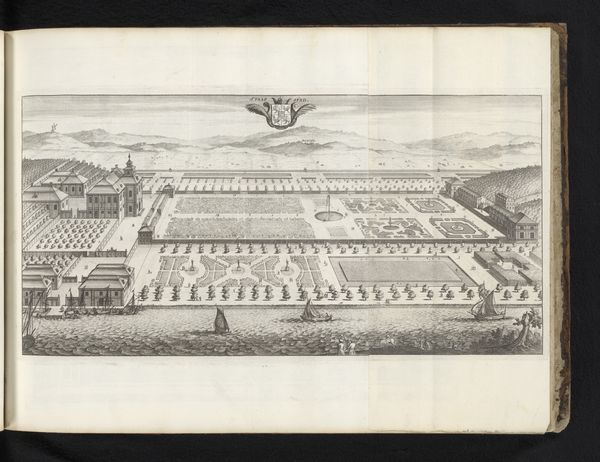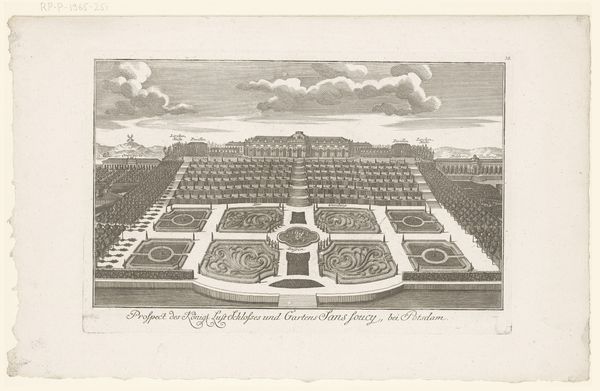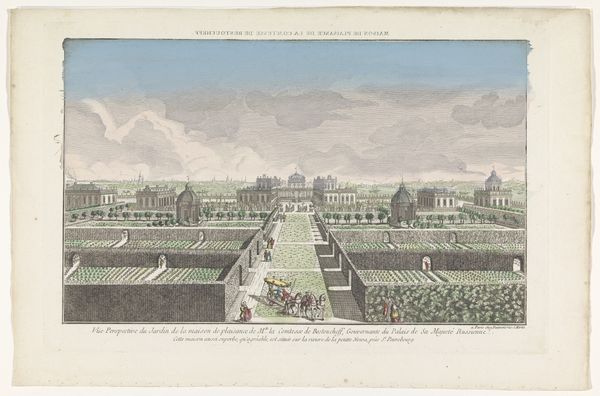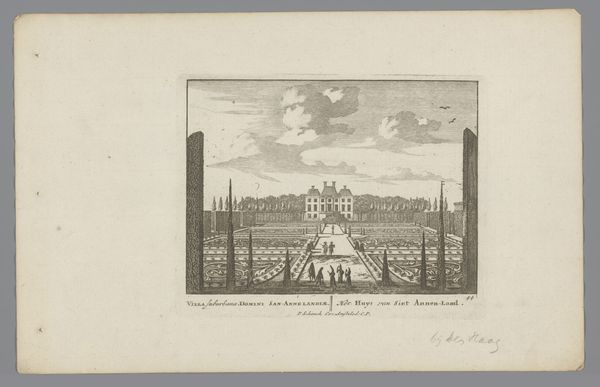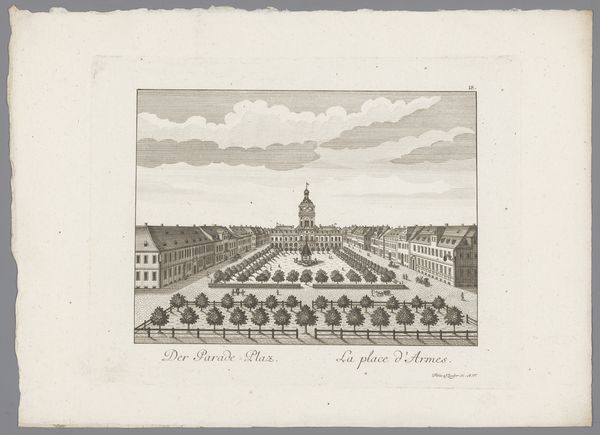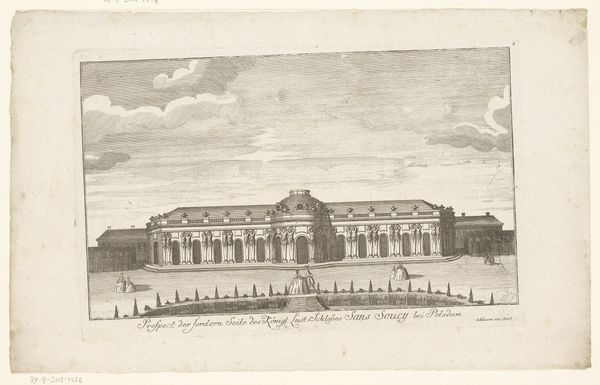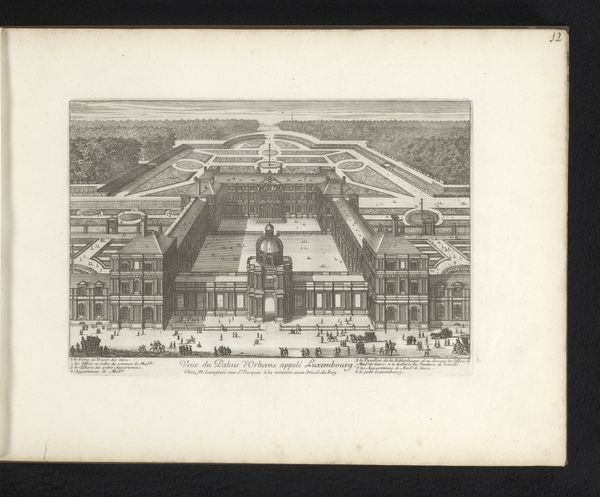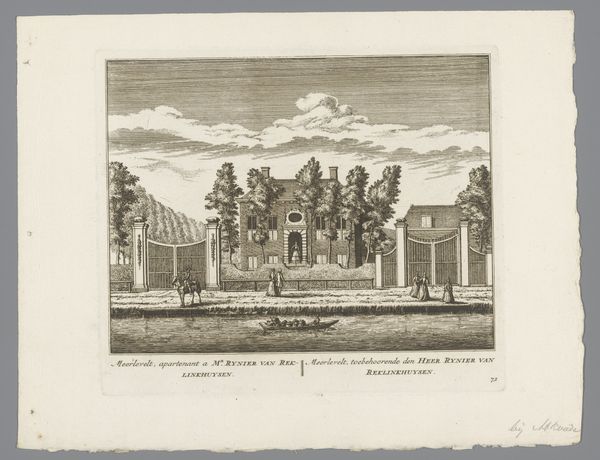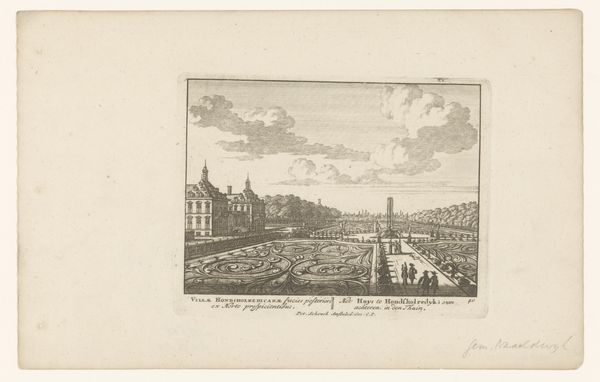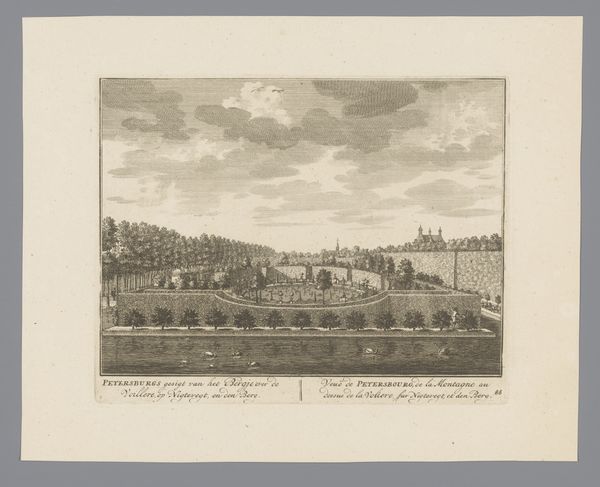
print, engraving
#
baroque
# print
#
landscape
#
cityscape
#
engraving
Dimensions: height 171 mm, width 208 mm
Copyright: Rijks Museum: Open Domain
Editor: This is "Gezicht op de wandelplaats van het Hof te Dieren," a print by Pieter Schenk from around 1700, held here at the Rijksmuseum. The rigid geometry of the gardens almost flattens the image, it's like a stage setting. What do you see in this piece? Curator: The emotional weight resides, for me, in the way Schenk orchestrates spatial illusions. Observe the water features acting like mirrors, doubling the already intricate network of hedges and pathways. Water often signifies the subconscious, and its reflection suggests a doubling of identity, perhaps questioning our own perceived reality in these constructed spaces. Editor: That’s fascinating. I was stuck on just the layout and hadn’t considered the symbolic depth of something as simple as reflection. Curator: And consider the elevated vantage point. Why depict this garden from above? Symbolically, height suggests power, control, overview. Gardens themselves are potent symbols – a tamed wilderness, representing man's imposition of order onto nature. Is Schenk suggesting a celebration of control, or a critique of artifice? Editor: Maybe it's a bit of both? The more I look, the less “natural” it feels. The paths look almost like cages when mirrored on the water. Curator: Precisely. Cages. Do you think the rigid structure provides security, or a feeling of being trapped? Remember, these formal gardens were places of both leisure and political maneuvering. Each carefully planned pathway offered an opportunity for display, for whispered conversations. The symbols are embedded within the structure, waiting for our interpretation. Editor: It makes me rethink landscape art completely. I appreciate you drawing out that connection to psychological spaces beyond what first meets the eye.
Comments
No comments
Be the first to comment and join the conversation on the ultimate creative platform.
